Last Updated on: September 1, 2025Tired of rising energy costs and endless lighting upkeep? This drains your budget and operational time. LED floodlights offer a powerful, efficient, and long-lasting solution for your industrial space.
LED floodlights are the top choice for industrial lighting because they provide superior energy efficiency, a much longer lifespan, and better durability. This significantly reduces operational costs and maintenance needs compared to traditional lighting like metal halide or high-pressure sodium fixtures.
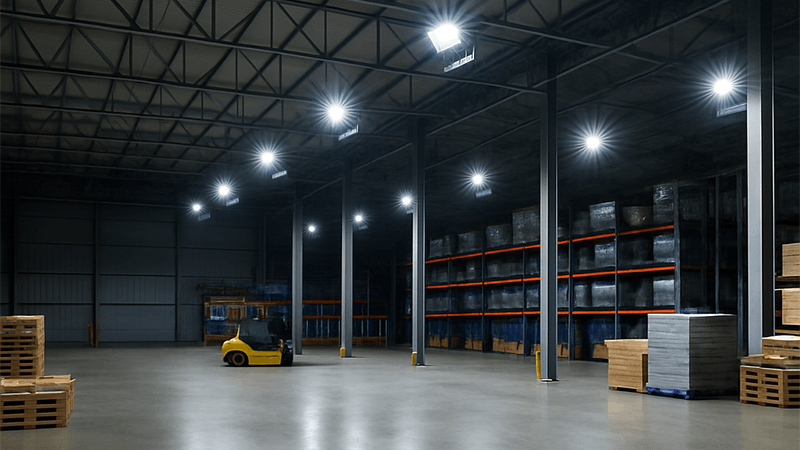
I’ve been in the lighting business for a long time, starting on the factory floor and building my way up. I’ve seen firsthand how the right lighting can transform a workspace, and how the wrong lighting can be a constant drain on resources. Many purchasing managers I talk to are looking for a real, long-term solution, not just another temporary fix.
So, let’s move past the sales pitches and get into the real details. I want to show you exactly why making the switch to LED floodlights is one of the smartest decisions you can make for your facility. We’ll look at the practical advantages you will see on your factory floor and, more importantly, in your budget.
What is an advantage of using a LED light for industrial lighting?
Are rising industrial energy costs eating into your profits? This is a constant battle for every facility manager. A key advantage of using LEDs is their incredible energy efficiency.
The single biggest advantage is energy efficiency. LED lights consume up to 80% less energy than traditional lights like metal halide. This translates directly to immediate and substantial savings on electricity bills, boosting your bottom line.
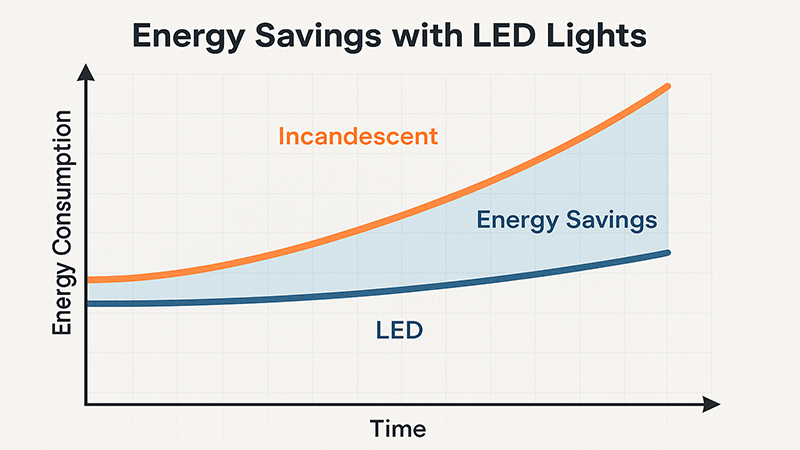
When I talk about energy efficiency, it’s not just a small percentage. It’s a game-changer for industrial facilities. Traditional bulbs, like a 400-watt metal halide, waste a lot of energy as heat. LEDs are different. They convert most of the electricity they use directly into light. This means a 150-watt LED floodlight can produce the same amount of bright, clear light as that old 400-watt fixture. You get the same performance for a fraction of the power consumption.
The Hidden Cost of Wasted Heat
The energy saved on lighting is only part of the story. In warmer climates, like the UAE where my friend Shaz manages purchasing for large projects, there’s another hidden cost. All that heat produced by old metal halide or high-pressure sodium lights adds to the building’s internal temperature. This puts an extra load on your air conditioning (HVAC) system, forcing it to work harder just to maintain a safe working temperature. This secondary energy consumption can be huge, especially in a large warehouse or factory filled with hundreds of hot lights. When you switch to cool-running LEDs, you not only slash your lighting bill, but you also reduce the strain on your HVAC system, leading to even more savings.
Real Savings in Action
I remember working with a client who managed a large distribution center in Dubai. His summer electricity bills were massive. We did an audit and found that his 1000W metal halide high bays were a major problem. They were not just lighting the space; they were acting like small heaters. We replaced them with 300W LED fixtures. The light quality was far better for his workers, but the biggest surprise for him was the significant drop in his air conditioning bill. The total savings were much more than just the direct lighting cost. This is the kind of practical advantage that makes a real difference to a business’s annual budget. It’s not just about a better light; it’s about a smarter, more efficient operation.
What are the main advantages of using LED lighting?
Constantly replacing bulbs in high-ceiling warehouses is a costly hassle. Production stops, and you need special equipment, all for a light that will just burn out again soon. LEDs offer many advantages beyond just saving energy.
The main advantages are extremely long lifespan, very low maintenance, high durability, and superior light quality. These factors combine to lower the total cost of ownership and improve safety and productivity in industrial environments.
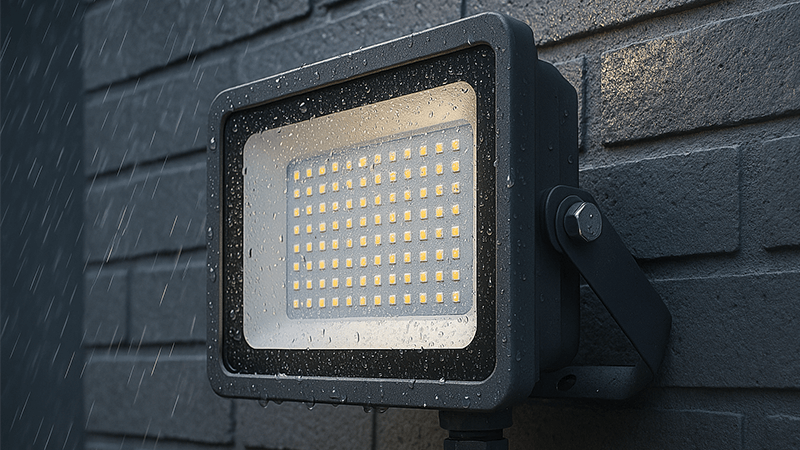
When you look beyond the initial purchase price, the true value of LED lighting becomes clear. The total cost of ownership is where LEDs really outshine everything else. It’s a combination of several powerful benefits that work together to save you money and reduce headaches for years to come. Think of it as an investment that pays you back month after month.
Lifespan and Maintenance Explained
Let’s talk numbers. A typical metal halide bulb might last 10,000 to 15,000 hours. A high-quality industrial LED fixture is rated for 50,000 hours or more. What does this mean in the real world? An LED can run 12 hours a day, 7 days a week, and still last for over 11 years. For a traditional bulb, you’d be replacing it every 2-3 years. Now, think about the cost of that replacement. It’s not just the bulb. It’s the labor, the scissor lift rental, and the production downtime needed to safely change a light that’s 30 feet in the air. Those "soft costs" add up quickly. With LEDs, you install them and forget about them for a decade.
A Word on Lumen Decay
Some manufacturers don’t like to talk about this, but all lights get dimmer over time. This is called lumen decay. The key is how quickly it happens. I’ve seen cheap LEDs lose 30% of their brightness in just a year. This is a common issue that many suppliers fail to mention. A high-quality industrial LED, however, is designed to manage this. You should look for an "L70" rating. An L70 rating of 50,000 hours means that after 50,000 hours of use, the LED will still produce at least 70% of its original light output. When you’re sourcing products, always ask for the L70 data. It tells you the true story of the fixture’s quality and longevity.
Are LED flood lights better?
Old floodlights often produce a poor, yellowish light. This can cause eye strain for workers and make it hard to see important details, creating safety risks. LED floodlights are truly better in almost every way.
Yes, LED floodlights are significantly better. They provide instant-on lighting with no warm-up time, superior color rendering (CRI) for clarity, and more directional control, which improves safety and reduces light pollution.
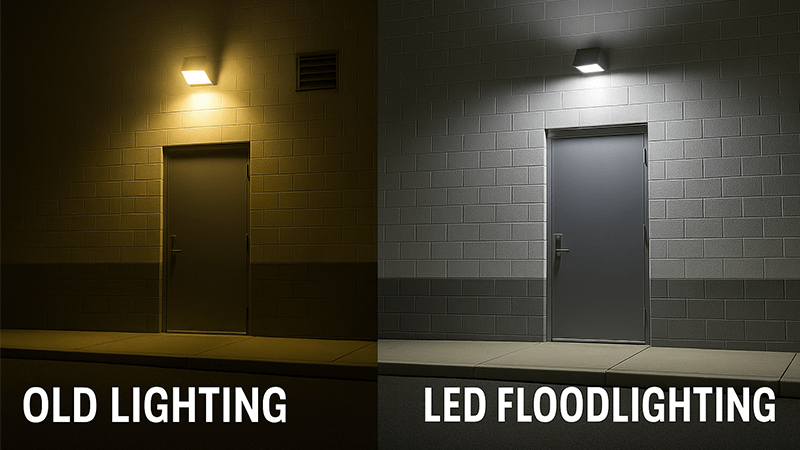
It’s not an exaggeration to say that the jump from traditional floodlights to LED floodlights is like the jump from a flip phone to a smartphone. The core function is the same—to produce light—but the performance, features, and user experience are worlds apart. Let’s break down some of the performance features that make a tangible difference in an industrial setting.
Seeing Colors as They Really Are
I often see spec sheets where the Color Rendering Index (CRI) is not listed. To me, this is a big red flag. CRI is a scale from 0 to 100 that measures how accurately a light source shows the true colors of an object compared to natural sunlight. Old high-pressure sodium (HPS) lights have a very low CRI, often around 25. This is why everything looks orange and washed out under them. For a worker trying to read a colored label or inspect a product for defects, this is a major problem. A good quality industrial LED floodlight should have a CRI of 80 or higher. This high CRI makes everything look crisp and clear, reducing eye strain and improving accuracy for detailed tasks. When I talk to purchasing managers like Shaz, I always stress that checking the CRI is not a luxury; it’s essential for a safe and productive workplace.
Control and "Instant-On" Performance
Another area where LEDs excel is control.
| Feature |
Traditional Floodlight (MH/HPS) |
Quality LED Floodlight |
| Warm-up Time |
5-15 minutes |
Instant On (Full Brightness) |
| Restart After Outage |
Up to 20 minutes |
Instant Restart |
| Light Direction |
Omni-directional (Wasted Light) |
Directional (Precise Optics) |
Think about a power flicker. With metal halide lights, you could be left in the dark for 15-20 minutes while the lamps cool down and then slowly warm back up. This is a serious safety hazard in an active factory or loading dock. LEDs turn back on to full brightness instantly. Furthermore, LEDs are directional. They don’t waste light by shining it upwards into the sky. With engineered lenses, we can shape the light and direct it exactly where it’s needed on the ground, preventing dark spots and reducing light pollution. This is something many suppliers gloss over by showing perfect light patterns in their brochures. In reality, without good optics, you get a bright hot spot and dark edges. Always ask about the optics and beam angle options.
Which type of lighting system is best suited for large commercial spaces?
Lighting a huge warehouse or factory floor is a massive challenge. Making the wrong choice leads to dark spots, high costs, and serious safety risks for your team. An integrated system of LED lights is the best solution.
For large commercial spaces like factories or warehouses, a planned system of LED high bay lights and LED floodlights is the best choice. This ensures powerful, uniform illumination over vast areas for maximum safety and efficiency.
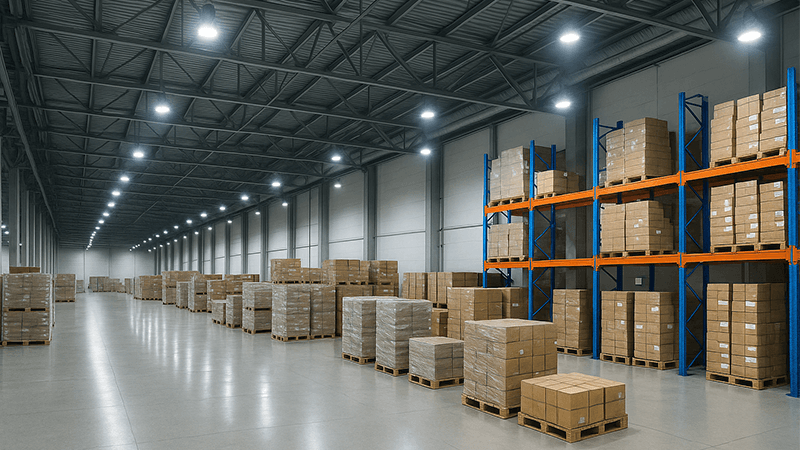
For big, open spaces, you can’t just pick one type of light and hope for the best. You need a strategy. The best approach combines different types of LED fixtures to create a complete system that covers every corner of your facility effectively. Generally, this means using LED high bays for the main, overhead ambient lighting inside a building. Then, you use LED floodlights for more specific tasks. This can include lighting outdoor loading docks, perimeter security, building facades, or focusing intense light on a specific work area or piece of machinery inside. The key is how you put these pieces together.
The Importance of a Lighting Plan
I always tell my partners that a professional lighting simulation is the most important first step for any large project. Guesswork is your enemy. We use software like DIALux to create a 3D model of your space. Then, we can place virtual fixtures, test different beam angles, and calculate the exact light levels (measured in lux or foot-candles) on the ground. This process shows you exactly how the final installation will perform before you spend a single dollar. It helps us determine the perfect number of lights and the ideal placement to guarantee uniform brightness without any dark spots. This science-based approach eliminates the risk of buying the wrong product or the wrong quantity, ensuring your investment is a success from day one.
A Practical Take on Smart Controls
Smart lighting controls, like automatic dimming and scheduling, are becoming more popular. They can offer extra energy savings. However, I’ve seen many projects where the smart features cause more problems than they solve. A common issue is stability; some cheaper wireless systems are unreliable, with lights that don’t respond or apps that crash. In a busy industrial environment, reliability is everything. Fancy features are useless if they don’t work 100% of the time. That’s why I advise my clients to stick with robust, proven control systems like 0-10V dimming or DALI. These are industry standards that are dependable and easy to manage. They give you solid control without the headaches of an unstable "smart" system.
Conclusion
LED floodlights offer massive savings, a decade-plus lifespan, and superior, safer light. They are the clear and logical choice for any modern industrial lighting project, lowering your total costs.